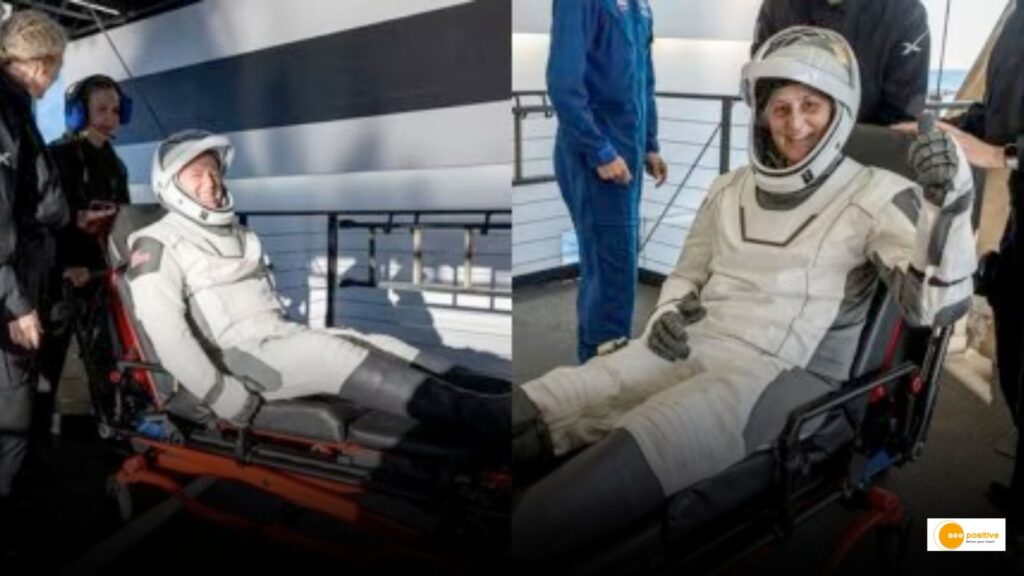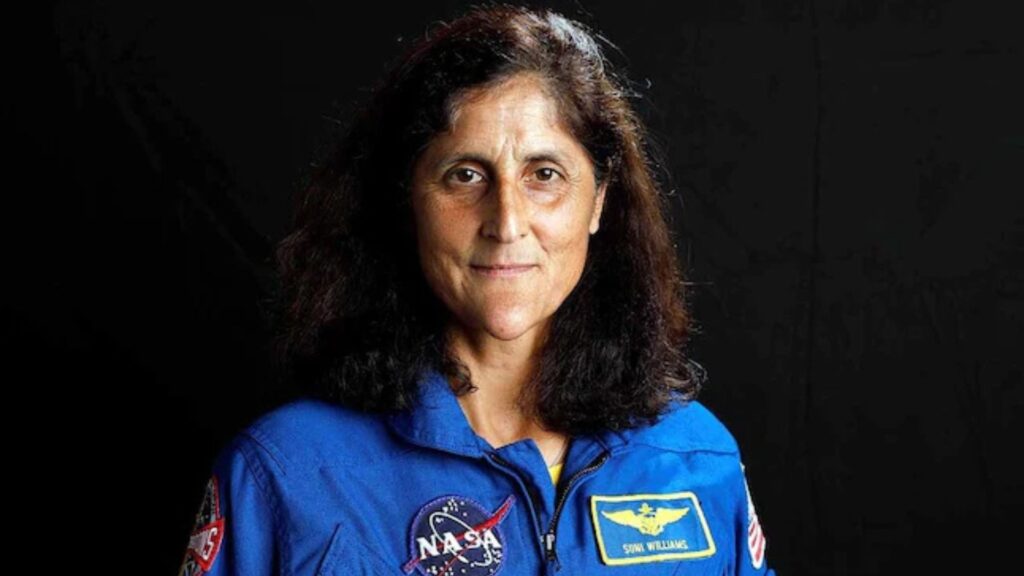
After a long wait, NASA astronaut Sunita Williams and Butch Willmore return to earth safely. The dolphins greeted Sunita Williams and Butch Wilmore after the Crew 9 astronauts splashed down in the Gulf Coast of Florida. It was a 17 hours long journey back to earth. The world is celebrating the resilience and courage of these astronauts.
45-day Rehabilitation Process Begins
NASA astronaut Sunita Williams and Butch Willmore began a 45-day rehabilitation process to accustom themselves to the gravity of the Earth following nine months on board the International Space Station (ISS).
The rehabilitation program, planned by NASA’s Astronaut Strength, Conditioning, and Rehabilitation (ASCR) specialists, is a two-hour morning exercise regime. Every day exercises include mobility training, strengthening of muscles, and endurance. The procedure runs through three stages, counteracting the physiological responses of weightlessness over extended intervals like muscle wasting, fluid transfer, and lowering of bone mineral density.
Why Sunita Williams was stuck on ISS?
NASA astronaut Sunita Williams and Butch Willmore got stranded in space since 9 months. Sunita Williams was on a NASA mission, on Boeing CST-100 Starliner. It is a key part of NASA’s initiative to commercialize human spaceflight. Due to technical issues the astronauts stranded on ISS since (from June 2024).
Their return to Earth is of great importance not just for their health but also for the extensive experiments they conducted during their time in space.

The astronauts can experience “Baby Feet”
When astronauts return to Earth, their bodies undergo a process of readjustment to gravity. This includes physical therapy and rehabilitation to regain muscle strength and bone density. The “baby feet” condition is a temporary effect, and with time and physical exercise, astronauts’ feet and bodies return to normal.
The term “baby feet” is a condition that astronauts experience after returning to Earth. It occurs especially after spending a significant amount of time in space. This condition involves the feet becoming soft, wrinkled, and sometimes even swollen, resembling the appearance of a baby’s feet. This happens due to the lack of gravity in space, which affects the bones, muscles, and fluids in the body, particularly in the lower extremities.
Spaceflight-associated deconditioning: significant effects on the human body
Extended space travel can have significant effects on the human body due to the absence of gravity. There is 10 times more exposure to radiation than on earth.
- Astronauts can lose as much as 20% of their muscle mass after just two weeks in space. To counteract this, astronauts engage in regular strength training and resistance exercises to maintain muscle strength during their missions.
- Astronauts also get at a risk of developing conditions like osteoporosis, where bones become fragile and more prone to fractures.
- The isolation, confinement, and extended periods of time in space can affect an astronaut’s mental health. Stress, depression, and anxiety can arise due to the lack of social interaction, the monotony of life in space, and the pressure of performing high-stakes tasks. To counteract these effects, astronauts undergo regular exercise routines while in space, which include resistance training, aerobic exercises, and treadmill running. These are vital for maintaining bone and muscle health, as well as cardiovascular fitness during extended missions.
Sunita’s story of achievements
From Military Career to Nasa
Williams served as a helicopter pilot in the U.S. Navy. She was also a test pilot and a lieutenant colonel. Her military experience helped her develop the physical and mental strength required for the challenges of space travel. She accumulated over 3,000 flight hours in more than 30 types of aircraft.
Williams is admired in India and the world over. She is regarded as a national hero for her achievements in space.
Second woman to walk in space
Sunita Williams became the second woman to walk in space (after Kathryn Sullivan) and has conducted multiple spacewalks. She held the record for the most spacewalks by a female astronaut for a time.
Williams also holds the record for the longest spaceflight by a female astronaut, with 195 days, 15 hours, and 16 minutes spent in space.
In 2008, Sunita Williams received the Padma Bhushan, the third-highest civilian award in India, in recognition of her outstanding contributions to space exploration.
An inspiration for young astronauts

Sunita Williams is indeed an incredible inspiration for young aspiring astronauts! Her achievements in space, along with her resilience and dedication, not just make her a powerful role model but also her life and career encourage young people to dream big, work hard, and embrace challenges.
Despite a longer-than-expected stay in space, Sunita Williams and Barry Willmore have managed to stay positive and focused on their mission. It is a testament to their resilience. Their ability to stay optimistic has helped them ensure that they remain focused even in time of distress.
Narayanan praises Govt- Private Partnership
Nasa astronaut Sunita Williams’ safe return to Earth has raised a wave of applause from retired ISRO scientist Nambi Narayanan, who highlighted the need for public-private partnership in space research. Nambi Narayanan also underscored the importance of international collaboration in space missions, drawing lessons from Williams’ return aboard Boeing’s Starliner spacecraft.


